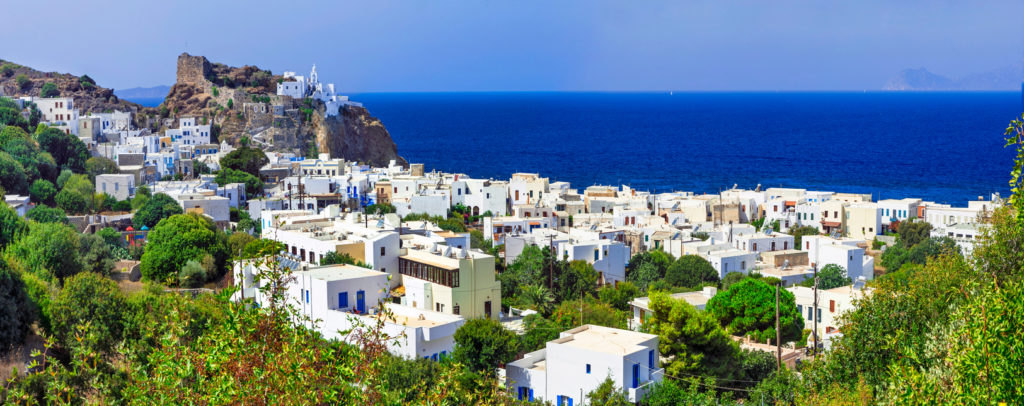Caldera - Crater
The volcano of Nisyros is the newest active volcano in Greece since its oldest rocks do not exceed 150,000 years of age. 60,000 years ago to this day, hundreds of small eruptions built a cone that rose about 600 metres above sea level and had roughly the perimeter of the island as it is today.
Two huge explosions, 25,000 and 15,000 years ago, destroy the central part of the volcano, which caves in and creates the current caldera of the volcano. Since then the volcano remains at rest. But the hot rocks, located a few kilometres in depth underneath the caldera and their hot gases, warm the seawater and the rainwater that circulates around the more shallow rocks and convert it into superheated liquid at temperatures approaching the 500 degrees Celsius. Intermittently, the superheated liquid ejects into the air the rocks that prevent it from reaching the surface, causing hydrothermal explosions and creating hydrothermal craters. Such explosions were recorded in Nisyros in historical times.
 English (UK)
English (UK)  Greek (GR)
Greek (GR) 


 Located in the village of Nikia, it is the first and so far the only volcanological museum in Greece. The main areas of the Museum host the following thematic units: -Volcanic genesis and structure -Volcanic process and products –The volcanoes of Greece –The volcano of Nisyros and the other active volcanoes of Greece and Volcanoes-Environment-Human. The museum has an exhibition area, which includes all the rocks of Nisyros as well as rocks from other volcanoes and also, places to view informative material.
Located in the village of Nikia, it is the first and so far the only volcanological museum in Greece. The main areas of the Museum host the following thematic units: -Volcanic genesis and structure -Volcanic process and products –The volcanoes of Greece –The volcano of Nisyros and the other active volcanoes of Greece and Volcanoes-Environment-Human. The museum has an exhibition area, which includes all the rocks of Nisyros as well as rocks from other volcanoes and also, places to view informative material.